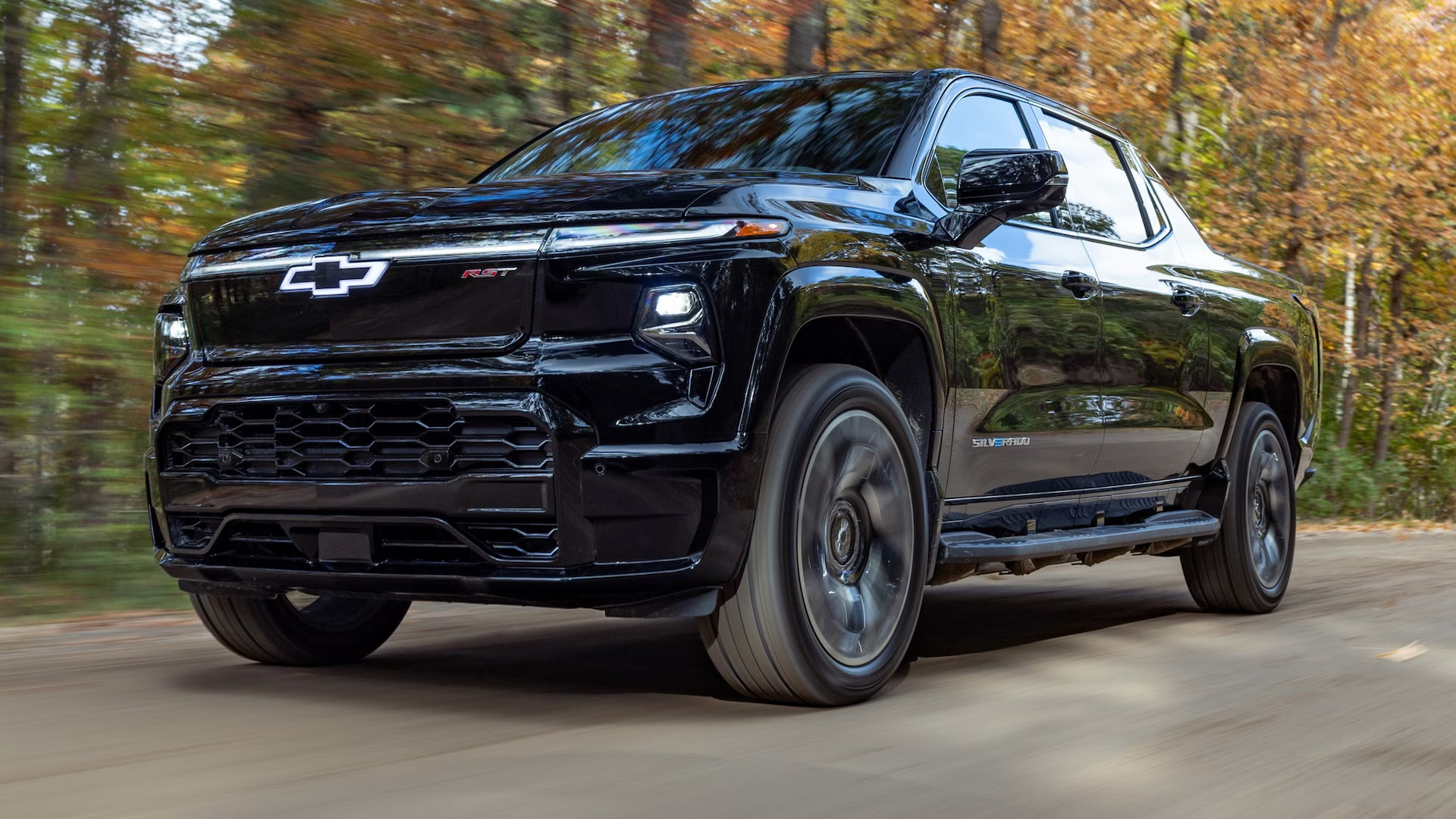2024 Chevrolet Silverado EV RST First Test: A Truck With Impressive Range, but Room for Improvement
Chevrolet’s electric truck debut with the 2024 Silverado EV is one that stands out for its incredible range and innovative technology. With an estimated 440 miles of range on a full charge, this is currently the longest-range electric pickup truck on the market, edging out competitors like the Rivian R1T (420 miles) and matching the GMC Sierra EV. In real-world highway testing, the Silverado EV delivered a remarkable 401 miles. If you’re after a truck with an enormous bed and nearly the same driving range as a conventional gas-powered pickup, this might be your ideal option.
However, while the Silverado EV’s range is undoubtedly a highlight, it’s the underlying approach to achieving that feat that raises some eyebrows. To get this truck to its impressive mileage numbers, Chevy opted to pack in as many batteries as possible—205 kWh’s worth, to be exact—into the truck’s floor. This large battery pack, stacked in a unique double-decker arrangement, helps the Silverado achieve its astounding range. While the 800-volt charging capabilities make fast recharges relatively painless (in our tests, the Silverado EV added 118 miles in 15 minutes and 236 miles in 30 minutes), it also brings significant weight penalties. The truck’s massive battery pack contributes to its nearly 9,000-pound curb weight, making it a heavy-duty contender that is not without compromises.
When it comes to driving, the Silverado EV RST doesn’t disappoint. With a combined 754 horsepower and 785 lb-ft of torque from its front and rear electric motors, the truck sprints to 60 mph in just 4.0 seconds. It’s not the fastest EV pickup on the market—that title likely goes to the Tesla Cybertruck Beast or Rivian’s R1T—but it’s still plenty quick for most drivers. The addition of four-wheel steering and air suspension makes the Silverado surprisingly nimble for its size, with the ride quality generally comfortable, though it can still be bumpy over rough surfaces due to the large 24-inch wheels and low-profile tires.
Despite the impressive acceleration and smooth ride, the truck’s weight does show its downsides. Towing capacity maxes out at 10,000 pounds, and payload is limited to 1,500 pounds—both of which fall behind the Rivian R1T (11,000 pounds towing, 1,760-pound payload) and Tesla Cybertruck (11,000 pounds towing, 2,500-pound payload). The Silverado’s braking performance, however, is commendable, with the truck stopping from 60 mph in a decent 132 feet, just a bit longer than the lighter Ford F-150 Lightning (123 feet). The Silverado EV’s one-pedal driving mode is particularly impressive, offering smooth and reliable braking even when towing a trailer.
One feature that needs refinement, however, is torque steer. This issue has been a persistent problem in GM’s first Ultium-platform electric vehicles, including the GMC Hummer EV, and unfortunately, it rears its head here too. When the accelerator is mashed, the Silverado EV tends to pull left or right, requiring constant corrections to keep it straight, especially when towing. While the truck handles well with gentler inputs, the torque steer is a surprising drawback, especially considering the high power output.
But it’s not just the mechanical performance that draws attention; the Silverado EV’s cabin also leaves something to be desired. For a vehicle priced over $96,000, the interior materials are surprisingly basic, featuring hard plastics and a lack of premium touches that one would expect from a high-end vehicle. While the cabin isn’t outright unpleasant, it doesn’t scream luxury either. Competitors like the GMC Sierra EV Denali, which costs just a few thousand dollars more, offer a far more luxurious experience. The rear seat area in particular feels cramped and uninspired, with only some red and silver trim breaking up the monotony of black plastic.
Technology in the Silverado EV is more impressive, with a sharp digital display ahead of the driver and a large central touchscreen that includes Google Built-In for seamless connectivity. The My Mode driver settings—customizable throttle, steering, and suspension preferences—are useful but hidden within the interface, making them less intuitive to access compared to the simpler drive modes for Normal, Sport, Tow/Haul, and Off-Road.
The Silverado EV also boasts an innovative midgate, inspired by the Chevrolet Avalanche. This feature allows the bed to extend into the cabin for longer cargo, but the process of lowering the bulkhead and removing the rear window is fiddly and cumbersome. It’s a clever idea with limited real-world use, but it could use a bit more refinement to be fully practical.
Ultimately, the Silverado EV RST is a truck that’s hard to ignore, especially if you’re after an electric pickup with an unparalleled driving range. However, its high price, lackluster interior, and some rough edges in both design and driving dynamics might leave some buyers wondering if it truly justifies its premium. For those who prioritize range above all else, the Silverado EV still holds considerable appeal, though the GMC Sierra EV Denali, with nearly identical range but a far more refined cabin, may be a more compelling option for many. Only time will tell if Chevy’s electric pickup will win over the broader market, especially as more affordable variants of the Silverado EV hit the market.
